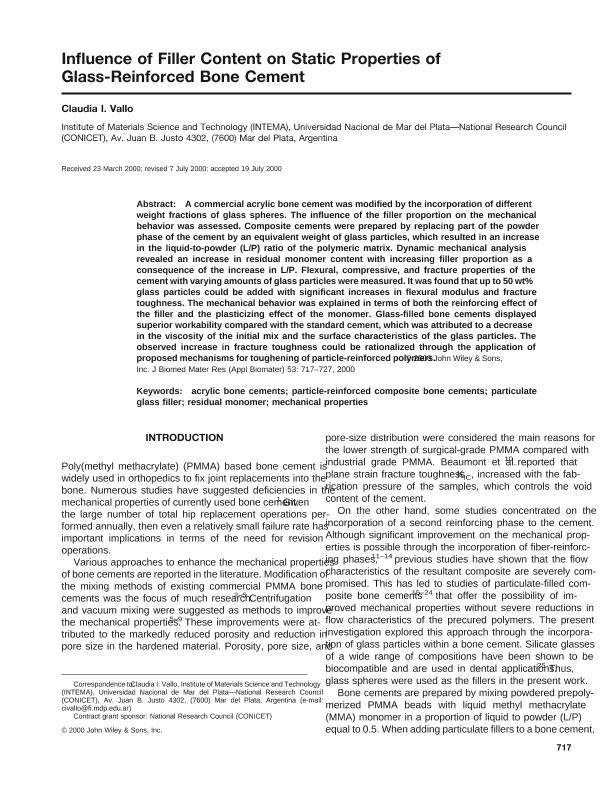Artículo
Influence of filler content on static properties of glass-reinforced bone cement
Fecha de publicación:
20/11/2000
Editorial:
John Wiley & Sons Inc
Revista:
Journal Of Biomedical Materials Research
ISSN:
0021-9304
Idioma:
Inglés
Tipo de recurso:
Artículo publicado
Clasificación temática:
Resumen
A commercial acrylic bone cement was modified by the incorporation of different weight fractions of glass spheres. The influence of the filler proportion on the mechanical behavior was assessed. Composite cements were prepared by replacing part of the powder phase of the cement by an equivalent weight of glass particles, which resulted in an increase in the liquid-to-powder (L/P) ratio of the polymeric matrix. Dynamic mechanical analysis revealed an increase in residual monomer content with increasing filler proportion as a consequence of the increase in L/P. Flexural, compressive, and fracture properties of the cement with varying amounts of glass particles were measured. It was found that up to 50 wt% glass particles could be added with significant increases in flexural modulus and fracture toughness. The mechanical behavior was explained in terms of both the reinforcing effect of the filler and the plasticizing effect of the monomer. Glass-filled bone cements displayed superior workability compared with the standard cement, which was attributed to a decrease in the viscosity of the initial mix and the surface characteristics of the glass particles. The observed increase in fracture toughness could be rationalized through the application of proposed mechanisms for toughening of particle-reinforced polymers.
Archivos asociados
Licencia
Identificadores
Colecciones
Articulos(INTEMA)
Articulos de INST.DE INV.EN CIENCIA Y TECNOL.MATERIALES (I)
Articulos de INST.DE INV.EN CIENCIA Y TECNOL.MATERIALES (I)
Citación
Vallo, Claudia Ines; Influence of filler content on static properties of glass-reinforced bone cement; John Wiley & Sons Inc; Journal Of Biomedical Materials Research; 53; 6; 20-11-2000; 717-727
Compartir
Altmétricas




